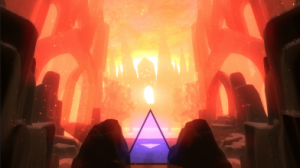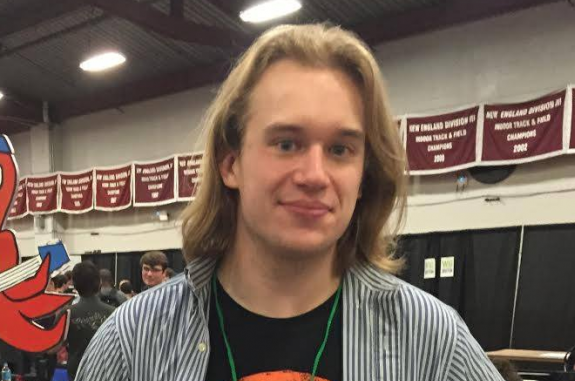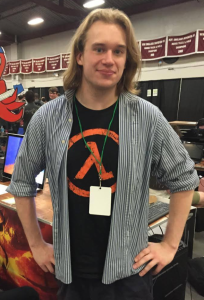
Northeastern alumnus Mark Mayers has had his hands full since graduation. While working as a computer scientist in artificial intelligence, he has also been developing his own game, Desolus, for several years. His pursuit of games was inspired by his CAMD classes, specifically the classes Game Artificial Intelligence and Game Business. Although Mark was a Computer Science major, he became very involved with the game development scene at Northeastern, and was a member of the Game Development Club, currently advised by Associate Professor Celia Pearce, and at the time, lead by Mark Sivak.
Recently, Desolus was accepted to be shown at the Smithsonian American Art Museum as part of the Smithsonian Arcade on July 22. We caught up with Mark to learn more about this exciting news, and of course, learn more about Desolus – which combines his passions of computer science and games with art.
When did you get the first idea for Desolus and how long have you been working on it?
The development of Desolus has been an iterative process; it’s probably been about five different games with similar themes. I started the project right before I graduated from Northeastern, in late 2014. Much of the time from 2014 to 2016 was spent building critical skills, as I began without any art or game development experience. However, programming was my primary strength in the beginning; I worked as a Computer Scientist at MIT for three years, and studied Computer Science at Northeastern. This allowed me to create the initial prototypes and gave me traction.
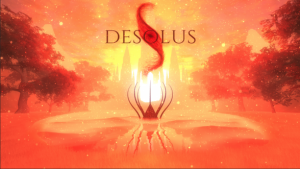
The first ideas for Desolus in its current form came around June 2016, which is when I started thinking about the concepts of alternate dimensions and black holes. In June 2017, I began experimenting with buildings and architecture. I was inspired by the works of M. C. Escher, Gothic and Islamic architecture, and the mathematics of fractals. This vastly influenced the style of the game, and gave me new direction. Now in June 2018, I finally have a cohesive vision. The iterative process lead to a higher quality title with more meaningful artistic themes. I think any great creative idea starts off as an intangible feeling, which you refine gradually with critical thought and deliberation.
Why did you choose the adventure/puzzle games genre and how is your game different than others?
Action games are the most prolific in the industry, especially in AAA (an informal classification used for video games produced and distributed by a mid-sized or major publisher), so I wanted to create something different. I didn’t want to make a game with enemies, combat, death, or traditional video game tropes, which made me seek influences from other genres.
In regards to specific video games, I grew up playing The Legend of Zelda, which is probably my favorite series. I was always drawn to exploring these vast landscapes filled with secrets, and Zelda is the quintessential game representing this experience. Additionally, games like Portal or The Witness have been huge influences when it comes to puzzle design and structure. Both games elegantly introduce complex concepts, and are master classes in design and nonverbal communication.
Desolus is an amalgamation of everything I find most interesting, which I believe makes for an original blend. A combination of the captivating art style, physics themed mechanics, surrealist narrative, and classical piano soundtrack, make Desolus a game which stands out. I took a course on Beethoven freshman year, which was one of my favorite courses at the University.
This partially inspired the decision to use solo piano as the soundtrack, which is written by local pianist Kyle Landry.
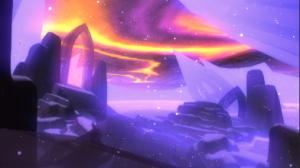
How did you manage making a game with so many different mechanics heavily rooted in physics?
From the very beginning, Desolus has been based around concepts involving astronomy, physics, and science fiction. I’ve always been interested in those fields, so these influences went directly into the game.
Throughout the many prototypes of the game, almost all of the mechanics were physics themed. However, it wasn’t until the final prototype in June 2017, when I started to re-center the game, eliminating extraneous mechanics which didn’t contribute to the core experience. The game is now, mechanically, about black holes, alternate dimensions, and surrealist architecture.
Over time the game transitioned from being solely about physics, to a game examining physics and science through an artistic perspective. This transition is likely because I began with a scientific background, and learned to accept myself more as an artist over time.
Any last minute preparations to get the game ready for the Smithsonian Arcade?
Fortunately, at this point I think I’m well prepared! I’ve been sending this demo of the game to various other developers and friends to get constructive criticism. Overall feedback been extremely positive. The game has definitely come a long way and I think this is the best version yet. I’m looking forward to presenting in July!
